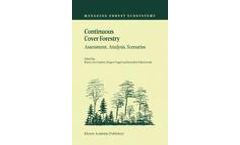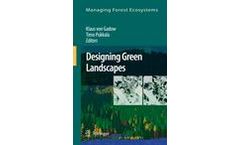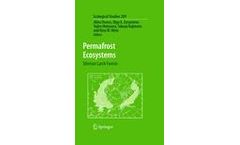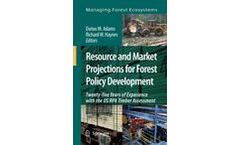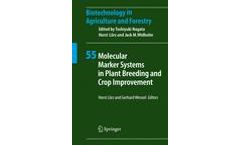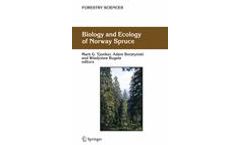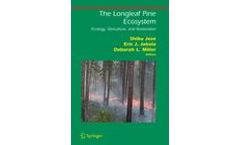Refine by
silviculture books
12 books found
Understanding the complex structure and dynamics of these mixtures is a necessary step in the process of formulating appropriate silvicultural systems for their management. David M. Smith, Professor Emeritus of Silviculture at Yale University, has devoted much of his career to the study of the structure, development, and silvicultural ...
The large-scale application of new silvicultural systems has become a political reality in many parts of the world. This involves a gradual tarnsformation of traditional silvicultural practice towards Continuous Cover Forestry (CCF), also know as near-natural forest management, favouring mixed uneven-aged stands, site-adapted tree species and selective ...
The key to successful timber management is a proper understanding of growth processes, and one of the objectives of modelling forest development is to provide the tools that enable foresters to compare alternative silvicultural treatments. In a managed woodland, the most important periodic disturbances are the thinning operations, which are often carried out at regular ...
Mangroves are a fascinating group of plants that occur on tropical and subtropical shorelines of all continents, where they are exposed to saltwater inundation, low oxygen levels around their roots, high light and temperature conditions, and periodic tropical storms. Despite these harsh conditions, mangroves may form luxuriant forests which are of significant economic and environmental value ...
Based on the ‘multiple path’ principle, this approach links species choice and silvicultural methods with changing demands and changing environmental conditions, to ensure continuous adaptation, often several times within the lifetime of a tree. ...
The threats posed by anthropogenic pollution of the environment have resulted in animated public debate about forest condition and growth. Therefore, research into forest condition and vitality has been one of the key areas in forest ecology during the past two decades. The basic questions presented have been: What changes are taking place in forests? Why does forest condition vary, and ...
Drawing from a decade-long collaboration between Japan and Russia, this important volume presents the first major synthesis of current knowledge on the ecophysiology of the coniferous forests growing on permafrost at high latitudes. It presents ecological data for a region long inaccessible to most scientists, and raises important questions about the global carbon balance as these systems are ...
Long-range models that include product and resource detail are essential to meaningful analysis of both industry and resource sustainability. Taking this as its central argument, this book provides essential reading to anyone interested in projecting the future of either the forest products market and/or the forest resource conditions. It is aimed at policy makers, model builders, researchers and ...
Successful release of new and better crop varieties increasingly requires genomics and molecular biology. This volume presents basic information on plant molecular marker techniques from marker location up to gene cloning. The text includes a description of technical approaches in genome analysis such as comparison of marker systems, positional cloning, and array techniques in 19 crop plants. A ...
Conifer Cold Hardiness provides an up-to-date synthesis by leading scientists in the study of the major physiological and environmental factors regulating cold hardiness of conifer tree species. This state-of-the-art reference comprehensively explains current understanding of conifer cold hardiness ranging from the gene to the globe and from the highly applied to the very basic. Topics ...
Norway spruce (Picea abies L.) is an important tree species with a remarkable natural range throughout Europe and Asia, ranging from the Balkan Peninsula to Siberia in the north and from the French Alps in the west to the Sea of Okhotsk in the east. Wherever it occurs, it is a key component of both natural and managed forests. Norway spruce is the most economically valuable conifer in Europe, ...
The longleaf pine ecosystem, once one of the most extensive ecosystems in North America, is now among the most threatened. Over the past few centuries, land clearing, logging, fire suppression, and the encroachment of more aggressive plants have led to an overwhelming decrease in the ecosystem’s size, to approximately 2.2% of its original coverage. Despite this devastation, the range of the ...


